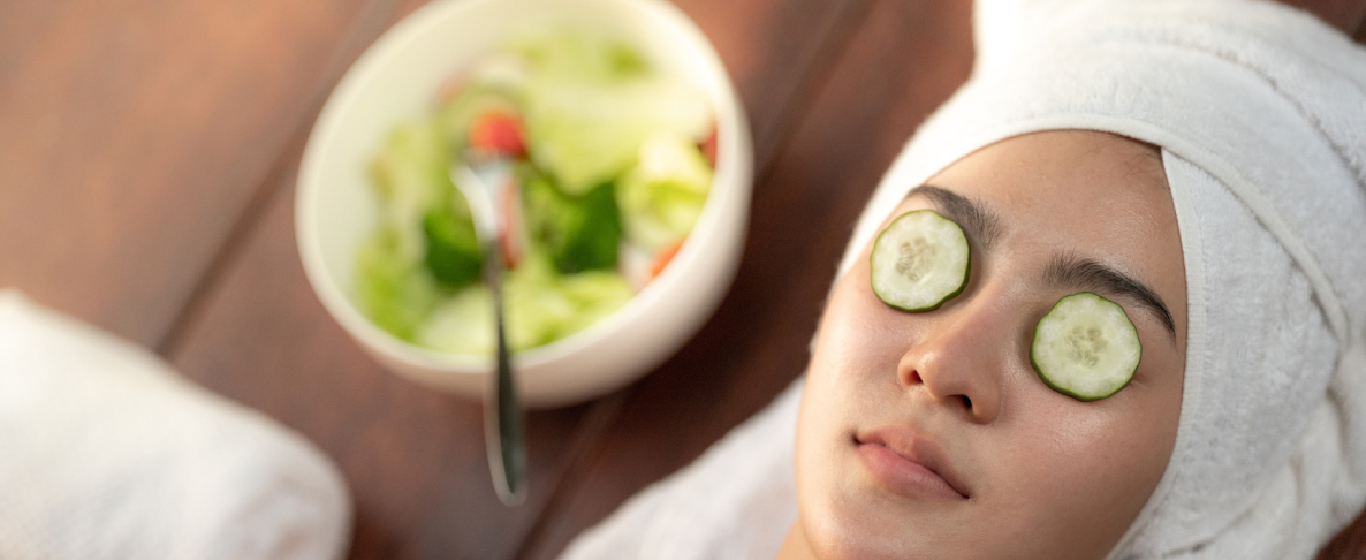
What your skin and nails say about your health
Taking care of your skin and nails requires more than trendy facial masks, serums, or monthly manicures.
As the largest organ in your body, the skin has very important functions. It doesn’t only serve as an external covering for your muscles and bones, but it also serves as a shield for your internal organs against infections. This function plays an important role in maintaining the immune system as the skin prevents harmful germs from entering your body.[1] Moreover, your skin protects you from the extremes of weather by regulating your body temperature.[2]
Though tiny in size, nails are also part of the largest organ. They are made of hard keratin that is produced by our skin cells, and just like our skin, they serve a protective function, too. They form a hard outer covering for the sensitive areas of our toes and fingers.
Since our skin and nails are exterior parts of our body that guard our internal parts, their condition can reflect how healthy or unhealthy we are. What are the tell-tale signs that our skin and nails are giving us?
Signs that indicate health problems
There are a lot of ways to tell what is going on inside your body just by looking at your skin or nails. Look at the signs that might be a clue to the condition of your body.
-
Red eyelids or lumps around your lids. This can be a sign that your eyelids might be irritated from products like mascara, eye shadow, or shampoo[3].
-
Dark patches on the back of your neck and under your arms. These patches can be one of the earliest signs of prediabetes. It can also be a sign that your body is becoming insulin resistant.
-
Red “butterfly” rash on your face. This might be an indication for allergies or infections. This can also be a sign of lupus.
-
Dry skin. If your skin becomes too dry, this might be because you are dehydrated, or you use harsh soaps.
-
Dark, unusual moles. This can be a warning sign of skin cancer.
-
Nail discoloration. This can be a sign of infections with common fungi. This can also be a sign of diabetes or liver, kidney, heart, or lung conditions.[4]
-
Pale nails. Having very pale nails might be a sign of anemia, liver disease, or malnutrition.5
-
Cracked or split nails. Sometimes, this is linked to thyroid disease and if it’s combined with a yellowish hue it is more likely due to fungal infection.
-
Short and bitten-down nails. Psychiatrists say this can be a result of stress and anxiety.
Our skin and nails carry clues about our health and if you notice big changes in them ranging from discoloration or texture, maybe this is a sign for you to consult your doctor. Meanwhile, there are things you can do on your own to make sure you don’t reach that point. Let’s see how we can keep our skin and nails glowing and healthy.
Skin care tips
-
Wash your face gently. Scrubbing can irritate your facial skin. Clean your face gently with a mild cleanser using your fingertips, in circular motions.
-
Use products that match your skin type. Different products are formulated for different skin types’ needs. The key to helping skin look better is using products that match your skin type.
-
Apply sunscreen everyday. Sun damage can trigger rapid skin aging and even skin cancer. Put on sunscreen with SPF 15 or higher with both ultraviolet A and ultraviolet B (UVA and UVB protection).6
-
Eat a well-balanced diet. Make sure to get your vitamin A, B1, B3, B6, C, and D.7 These vitamins help you maintain healthy skin. Nutritious eating will make sure that you look healthy inside out.
-
Exercise. Being physically active can help maintain the smooth appearance of the skin. It also increases blood flow which helps nourish skin cells. 8
-
Manage stress. Stress can make your skin more sensitive and reactive. This can make your skin harder to heal; that’s why breakouts are more likely to happen when you’re stressed.9 Stress can also trigger many skin conditions like acne, eczema, and psoriasis.
Nail care tips
-
Practice proper nail hygiene. Keep your nails trimmed, dry, and clean. This prevents bacteria from growing under your fingernails.
-
Don’t bite your fingernails. This bad habit can allow bacteria or fungi to enter and may even cause an infection.
-
Moisturize. You can use hand lotion to keep your fingernails and cuticles moisturized.
-
Clean your nail tools. Wash your nail clippers and other nail care tools with soap and water or rubbing alcohol. This will keep your nails free from infection.
-
Take a break from nail polish. Your nails need to take a break from chemicals like polish because it can dry your nails and weaken the structure of your nails.
Other than treating skin and nail care as a beauty trend, give it a more holistic approach. This means nourishing your body with the right habits and lifestyle choices to make sure you’re healthy both inside and out.
---
References
1. Healthy Skin. American Skin Association. (2020). Retrieved from http://www.americanskin.org/resource/
2. Skin. Healthdirect Australia. (2020). Retrieved from https://www.healthdirect.gov.au/skin
3. Migala, J. (2015, August 13). 6 Things Your Skin Says About Your Health. Prevention. https://www.prevention.com/health/a20474429/skin-conditions-and-your-health/
4. Nail Discoloration: Symptoms, Signs, Causes & Treatment. (n.d.). MedicineNet. Retrieved from https://www.medicinenet.com/nail_discoloration/symptoms.htm
5. Slideshow: What Your Nails Say About Your Health. WebMD. https://www.webmd.com/skin-problems-and-treatments/ss/slideshow-nails-and-health
6. Sun Safety | Skin Cancer | CDC. (2020, June 1). www.cdc.gov. https://www.cdc.gov/cancer/skin/basic_info/sun-safety.htm#:~:text=For%20the%20most%20protection%2C%20wear
7. Healthy Skin. American Skin Association. (2020). Retrieved from http://www.americanskin.org/resource/
8. Jaret, P. (n.d.). Exercise for Healthy Skin. WebMD. https://www.webmd.com/skin-problems-and-treatments/acne/features/exercise#1
9. Marks, H. (2010, November 21). Effects of Stress on Your Skin. WebMD; WebMD. https://www.webmd.com/beauty/the-effects-of-stress-on-your-skin

